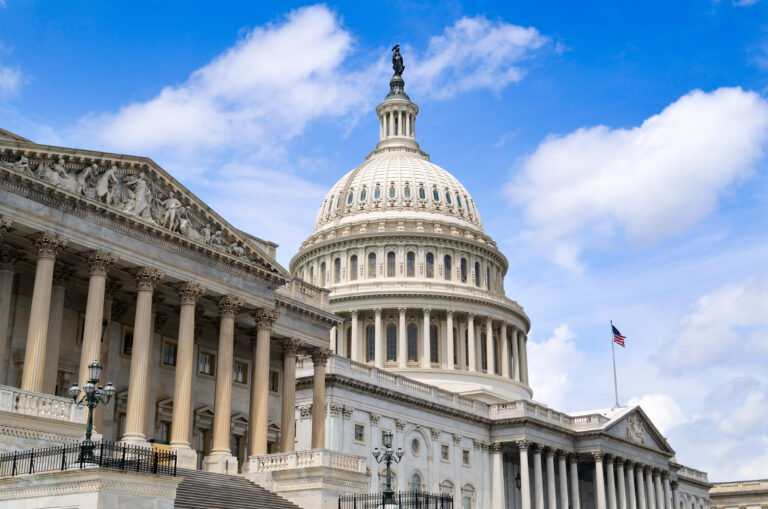Despite major layoffs at tech giants from Amazon to Salesforce, the economy continues to tilt toward, what some are calling, the first “full-employment recession” as substantial investments in economic development contained in the Inflation Reduction and CHIPS and Science Acts begin to take effect.
So what should we expect in the world of workforce policy in the months to come?
W/A Chief of Staff Ben Watsky sat down with our recently returned Senior Advisor Seth Harris, who served as Acting Secretary of Labor during the Obama administration and most recently was Deputy Assistant to the President for Labor and the Economy in the Biden White House, for an inside perspective.
BIW: Let’s start with the big picture. What are the mega trends shaping the world of workforce policy this year?
SDH: 2023 will be the year that big investments in economic development start to hit the ground — particularly in the infrastructure construction, transportation, broadband and energy or climate-related industries — through the Bipartisan Infrastructure Law and the Inflation Reduction Act, and from the provisions in the CHIPS and Science Act that essentially build a whole new manufacturing sector in the US. As those investments turn into real-world projects, we can project significantly elevated demand for all kinds of workers, particularly skilled workers, in the construction trades and manufacturing, as well as in renewable energy generation and the manufacturing required to support it.
BIW: What are companies and policymakers going to do to fill that demand?
SDH: The truth is that there’s not very much money in any of these bills for workforce development. The President had proposed around $100 billion in additional workforce funding to help meet anticipated demand for skilled workers, but almost none of it came through. And we don’t have a fully developed training or apprenticeship infrastructure for the emerging industries that will benefit from these investments.
As a result, the existing public workforce system, along with community colleges, 4-year higher education institutions, and other providers will bear the brunt of responding to increased demand in their communities and regions. In order to make good on the promise of all this federal funding and legislation, they’ll have to do that in partnership with the businesses that win the contracts, and the unions representing the workers who are going to do the work.
BIW: Are there any training and workforce development investments that we should be optimistic about?
SDH: There’s reason for optimism around the substantial investment this Administration has made in Historically Black Colleges and Universities. President Biden and his team recognize that it’s not enough to prepare workers for in-demand jobs; we also need to make sure that the opportunities we create are accessible and equitable.
Other than that, though, Congress has not significantly increased the available resources for publicly funded skills training and job placement. We haven’t seen massive growth in WIOA [Workforce Innovation and Opportunity Act] funding, or the community college system, or dramatic expansion in Pell funding or the available uses for Pell grants. That could very quickly prove to be a problem if we can’t fill the jobs we need to bring all these infrastructure and climate investments to life.
BIW: What’s the reason for this relative lack of investment in workforce development?
SDH: First off, unfortunately, too many of the people who stand to benefit from that funding largely don’t know that they would be the beneficiaries. Unionized workers, who make up a relatively small share of the workforce these days, either have apprenticeships or in-house training already provided, or at least have a union to fight for them. But the large proportion of American workers who earn low wages and are not in unions have relatively few people in power fighting to meet their skills needs.
That often means the principal advocates for workforce funding are training providers themselves. As a result, the dialogue between Congress and the main constituents often shakes out to: “give us the funding so that we can train workers.” That doesn’t have as much of an impact as: “this funding will help us bring broadband to rural communities; build bridges; ensure everybody has wind power.” Given that there’s already deep skepticism in Congress about the effectiveness of publicly funded job training programs, the level of advocacy we’re seeing right now may not be enough to move the needle.
BIW: What should we do about it?
SDH: The only way Congress will pay attention is if labor and management come together and make an aggressive pitch, along with public-sector leaders like mayors, governors, and county commissioners. What we need is a concerted effort from a broad coalition of leaders that skills training belongs at the top of the federal priority list, and that we’re not going to be able to build or repair the projects that need to get done unless there’s more funding for workforce development.
Building that coalition is easier said than done, of course. But there’s a lot of momentum on both sides of the aisle for some of these new models, particularly programs like registered apprenticeship that reduce the economic risks to learners and create smoother pathways from learning to work. Hopefully, we’ll be able to build on that momentum and make 2023 a year when Congress recognizes the importance of investing in the training and support needed to build the foundation for economic growth in the years ahead.




